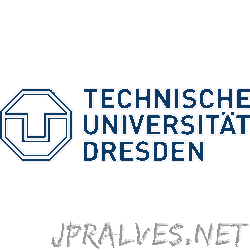Other
News New Fur For The Quantum Cat. Quantum Materials: Entanglement Of Many Atoms Discovered For The First Time

“Be it magnets or superconductors: materials are known for their various properties. However, these properties may change spontaneously under extreme conditions. Researchers at the Technische Universität Dresden (TUD) and the Technische Universität München (TUM) have discovered an entirely new type …

“Scientists of the Cluster of Excellence ct.qmat–Complexity and Topology in Quantum Matter have experimentally confirmed an unusual quantum phenomenon for the motion of luminescent electronic quasiparticles in atomically-thin semiconductors. The results were published in the Physical Review Letters …

“What is already established for inorganic semiconductors stays a challenge for their organic counterparts: Tuning the energy gap by blending different semiconducting molecules to optimize device performance. Now, scientists from TU Dresden, in cooperation with researchers at TU Munich, as …

“Scientists from the Cluster of Excellence ct.qmat – Complexity and Topology in Quantum Matter have developed a new understanding of how electrons behave in strong magnetic fields. Their results explain measurements of electric currents in three-dimensional materials that signal a …

“In a new publication in the scientific journal “Nature Materials”, researchers of the Institute for Applied Physics at TU Dresden introduce a novel device concept towards high-efficient and low-voltage vertical organic lighting-emitting transistors. With the new device architecture and fabrication …
News Opposites Attract: Scientists Discover How Mother-of-pearl Self-assembles Into A Perfect Structure

“Mother-of-pearl, also known as nacre, is an incredibly strong biomaterial forming the shell of some mollusks. Its strength and beauty comes from its remarkably regular and uniform architecture. Until now, it was unclear how this intricate structure could be built …

“Joint research work between Chemnitz University of Technology and Technische Universität Dresden under Chemnitz leadership reveals ionic defect landscape in metal halide perovskites - publication in renowned journal Nature Communications The group of so-called metal halide perovskites as materials has revolutionized …
“Blue phosphorus, an atomically thin synthetic semiconductor, becomes metallic as soon as it is converted into a double layer. This has been discovered by an interdisciplinary team led by Prof Thomas Heine from TU Dresden and Prof Gabriel Merino from …

“Scientists at the Institute of Applied Physics at TU Dresden have come a step closer to the vision of a broad application of flexible, printable electronics. The team around Dr Hans Kleemann has succeeded for the first time in developing …
News PinMOS: Novel Memory Device Combining Oled And Insulator Can Be Written On And Read Out Optically Or Electrically

“Scientists of the Dresden Integrated Center for Applied Physics and Photonic Materials (IAPP) and the Center for Advancing Electronics Dresden (cfaed) at TU Dresden have developed a novel storage technology based on the combination of an organic light-emitting diode (OLED …

